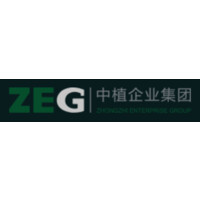
Fidelity National Financial Company Cyber Security Posture
fnf.comFidelity National Financial, Inc. (NYSE: FNF) is a leading provider of title insurance and transaction services to the real estate and mortgage industries. Ranked #359 on the FORTUNE 500(r) list for 2023, FNF is the nation's largest title insurance company through our title insurance underwriters (Fidelity National Title, Chicago Title, Commonwealth Land Title, Alamo Title and National Title Insurance of New York) that collectively issue more title insurance policies than any other title company in the United States. Our mission is to advance, expand, and protect the experience of property ownership by making the safety of our customers our primary focus. We pride ourselves on being extremely customer-oriented, motivated, and quick to provide solutions for all of your title insurance needs. We strongly encourage employee ownership of company stock so our FNF family can share in our company’s continuous growth and be a valuable part of something bigger than themselves.
FNF Company Details
fidelity-national-financial
19276 employees
38407.0
52
Financial Services
fnf.com
Scan still pending
FID_1390635
In-progress
Between 800 and 900
This score is AI-generated and less favored by cyber insurers, who prefer the TPRM score.
 FNF Global Score
FNF Global Score.png)

Fidelity National Financial Company Scoring based on AI Models
| Model Name | Date | Description | Current Score Difference | Score |
|---|---|---|---|---|
| AVERAGE-Industry | 03-12-2025 | This score represents the average cybersecurity rating of companies already scanned within the same industry. It provides a benchmark to compare an individual company's security posture against its industry peers. | N/A | Between 800 and 900 |
Fidelity National Financial Company Cyber Security News & History
| Entity | Type | Severity | Impact | Seen | Url ID | Details | View |
|---|---|---|---|---|---|---|---|
| Fidelity National Financial | Breach | 100 | 5 | 12/2023 | FID823311223 | Link | |
Rankiteo Explanation : Attack threatening the organization’s existenceDescription: A data breach at its parent firm, Fidelity National Financial, has exposed the personal data of over 1.3 million consumers nationwide, according to a notice sent by mortgage servicing provider LoanCare to it. The compromised information includes full name, Physical address, Social Security Numbers (SSN) and Loan number. LoanCare posted a notification on its website, published a copy of the notice that affected parties received, and alerted the authorities to the incident. | |||||||
Fidelity National Financial Company Subsidiaries

Fidelity National Financial, Inc. (NYSE: FNF) is a leading provider of title insurance and transaction services to the real estate and mortgage industries. Ranked #359 on the FORTUNE 500(r) list for 2023, FNF is the nation's largest title insurance company through our title insurance underwriters (Fidelity National Title, Chicago Title, Commonwealth Land Title, Alamo Title and National Title Insurance of New York) that collectively issue more title insurance policies than any other title company in the United States. Our mission is to advance, expand, and protect the experience of property ownership by making the safety of our customers our primary focus. We pride ourselves on being extremely customer-oriented, motivated, and quick to provide solutions for all of your title insurance needs. We strongly encourage employee ownership of company stock so our FNF family can share in our company’s continuous growth and be a valuable part of something bigger than themselves.
Access Data Using Our API

Get company history
.png)
FNF Cyber Security News
Fidelity National Financial restoring operations after containing cyberattack
Fidelity National Financial said it contained a previously disclosed cyberattack and is resuming normal business operations, according to an ...
Jacksonville Cybersecurity Job Market: Trends and Growth Areas for 2025
Jacksonville's cybersecurity job market is thriving, with an impressive growth rate projected at 28% by 2025, outpacing the national average ...
Fidelity National Financial subsidiary says 1.3 million affected by November cyberattack
A subsidiary of title insurance giant Fidelity National Financial reported a data breach to state regulators this week after a cyberattack ...
Cyberattack paralyzes Fidelity National Financial
A cyberattack has brought down the systems of Fidelity National Financial (FNF), causing service disruptions since last week.
Fidelity National Financial says hackers stole data on 1.3 million customers
The November cyberattack knocked the real estate servicing giant offline for a week, freezing the company's operations.
Fidelity National Financial Cyber Attack Exposed 1.3 Million Customers
Fidelity National Financial disclosed that hackers compromised the data of 1.3 million customers during the November 2023 cyber attack that ...
Fidelity National Financial Hit By Cyberattack
Ransomware outfit ALPHV/BlackCat claimed responsibility for the attack on November 22 in a post reportedly published to the group's leak blog.
Fidelity National Financial suffers ransom attack, customers said they weren't notified
Fidelity National Financial was attacked in a ransom attack, affecting many different services, including LoanCare, one of its subsidiaries.
BlackCat claims it is behind Fidelity National Financial ransomware shakedown
Fortune 500 insurance biz Fidelity National Financial (FNF) has confirmed that it has fallen victim to a "cybersecurity incident.".

FNF Similar Companies

Zhongzhi Enterprise Group Co., Ltd
Founded in 1995, Zhongzhi Enterprise Group ("ZEG") has headquartered in Beijing and currently has more than 10,000 employees. As China's leading asset management group, ZEG adheres to the philosophy of "Growing with Excellent Companies", and gradually develops into a diversified financial services g

Edward Jones
Edward Jones is a leading North American financial services firm in the U.S. and through its affiliate in Canada. The firm’s more than 20,000 financial advisors throughout North America serve more than 9 million clients with a total of $2.2 trillion in client assets under care as of December 31, 202

Chase
At Chase, we’re dedicated to helping you succeed. Whether you’re in need of banking, credit cards, mortgages, auto financing, investment guidance, small business support, or payment solutions, we’re beside you every step of the way. For customer service, contact us via chase.com/customerservice. S

SM Investments
SM Investments Corporation is a leading Philippine company that is invested in market-leading businesses in retail, banking, and property. It also invests in ventures that capture high growth opportunities in the emerging Philippine economy. SM’s retail operations are the country’s largest and most

BNY
We help make money work for the world — managing it, moving it and keeping it safe. As a leading global financial services company at the center of the world’s financial system, we touch nearly 20% of the world’s investable assets. Today we help over 90% of Fortune 100 companies and nearly all the t

LPL Financial
LPL Financial is a leader in the retail financial advice market and the nation’s largest independent broker/dealer*. We serve independent financial advisors and financial institutions, providing them with the technology, research, clearing and compliance services, and practice management programs th

Frequently Asked Questions (FAQ) on Cybersecurity Incidents
FNF CyberSecurity History Information
Total Incidents: According to Rankiteo, FNF has faced 1 incidents in the past.
Incident Types: The types of cybersecurity incidents that have occurred include ['Breach'].
Total Financial Loss: The total financial loss from these incidents is estimated to be {total_financial_loss}.
Cybersecurity Posture: The company's overall cybersecurity posture is described as Fidelity National Financial, Inc. (NYSE: FNF) is a leading provider of title insurance and transaction services to the real estate and mortgage industries. Ranked #359 on the FORTUNE 500(r) list for 2023, FNF is the nation's largest title insurance company through our title insurance underwriters (Fidelity National Title, Chicago Title, Commonwealth Land Title, Alamo Title and National Title Insurance of New York) that collectively issue more title insurance policies than any other title company in the United States. Our mission is to advance, expand, and protect the experience of property ownership by making the safety of our customers our primary focus. We pride ourselves on being extremely customer-oriented, motivated, and quick to provide solutions for all of your title insurance needs. We strongly encourage employee ownership of company stock so our FNF family can share in our company’s continuous growth and be a valuable part of something bigger than themselves..
Detection and Response: The company detects and responds to cybersecurity incidents through {description_of_detection_and_response_process}.
Incident Details
Incident 1: Ransomware Attack
Title: {Incident_Title}
Description: {Brief_description_of_the_incident}
Date Detected: {Detection_Date}
Date Publicly Disclosed: {Disclosure_Date}
Date Resolved: {Resolution_Date}
Type: {Type_of_Attack}
Attack Vector: {Attack_Vector}
Vulnerability Exploited: {Vulnerability}
Threat Actor: {Threat_Actor}
Motivation: {Motivation}
Incident 2: Data Breach
Title: {Incident_Title}
Description: {Brief_description_of_the_incident}
Date Detected: {Detection_Date}
Date Publicly Disclosed: {Disclosure_Date}
Date Resolved: {Resolution_Date}
Type: {Type_of_Attack}
Attack Vector: {Attack_Vector}
Vulnerability Exploited: {Vulnerability}
Threat Actor: {Threat_Actor}
Motivation: {Motivation}
Common Attack Types: As of now, the company has not encountered any reported incidents involving common cyberattacks.
Identification of Attack Vectors: The company identifies the attack vectors used in incidents through {description_of_identification_process}.
Impact of the Incidents
Incident 1: Ransomware Attack
Financial Loss: {Financial_Loss}
Data Compromised: {Data_Compromised}
Systems Affected: {Systems_Affected}
Downtime: {Downtime}
Operational Impact: {Operational_Impact}
Conversion Rate Impact: {Conversion_Rate_Impact}
Revenue Loss: {Revenue_Loss}
Customer Complaints: {Customer_Complaints}
Brand Reputation Impact: {Brand_Reputation_Impact}
Legal Liabilities: {Legal_Liabilities}
Identity Theft Risk: {Identity_Theft_Risk}
Payment Information Risk: {Payment_Information_Risk}
Incident 2: Data Breach
Financial Loss: {Financial_Loss}
Data Compromised: {Data_Compromised}
Systems Affected: {Systems_Affected}
Downtime: {Downtime}
Operational Impact: {Operational_Impact}
Conversion Rate Impact: {Conversion_Rate_Impact}
Revenue Loss: {Revenue_Loss}
Customer Complaints: {Customer_Complaints}
Brand Reputation Impact: {Brand_Reputation_Impact}
Legal Liabilities: {Legal_Liabilities}
Identity Theft Risk: {Identity_Theft_Risk}
Payment Information Risk: {Payment_Information_Risk}
Average Financial Loss: The average financial loss per incident is {average_financial_loss}.
Commonly Compromised Data Types: The types of data most commonly compromised in incidents are {list_of_commonly_compromised_data_types}.
Incident 1: Ransomware Attack
Entity Name: {Entity_Name}
Entity Type: {Entity_Type}
Industry: {Industry}
Location: {Location}
Size: {Size}
Customers Affected: {Customers_Affected}
Incident 2: Data Breach
Entity Name: {Entity_Name}
Entity Type: {Entity_Type}
Industry: {Industry}
Location: {Location}
Size: {Size}
Customers Affected: {Customers_Affected}
Response to the Incidents
Incident 1: Ransomware Attack
Incident Response Plan Activated: {Yes/No}
Third Party Assistance: {Yes/No}
Law Enforcement Notified: {Yes/No}
Containment Measures: {Containment_Measures}
Remediation Measures: {Remediation_Measures}
Recovery Measures: {Recovery_Measures}
Communication Strategy: {Communication_Strategy}
Adaptive Behavioral WAF: {Adaptive_Behavioral_WAF}
On-Demand Scrubbing Services: {On_Demand_Scrubbing_Services}
Network Segmentation: {Network_Segmentation}
Enhanced Monitoring: {Enhanced_Monitoring}
Incident 2: Data Breach
Incident Response Plan Activated: {Yes/No}
Third Party Assistance: {Yes/No}
Law Enforcement Notified: {Yes/No}
Containment Measures: {Containment_Measures}
Remediation Measures: {Remediation_Measures}
Recovery Measures: {Recovery_Measures}
Communication Strategy: {Communication_Strategy}
Adaptive Behavioral WAF: {Adaptive_Behavioral_WAF}
On-Demand Scrubbing Services: {On_Demand_Scrubbing_Services}
Network Segmentation: {Network_Segmentation}
Enhanced Monitoring: {Enhanced_Monitoring}
Incident Response Plan: The company's incident response plan is described as {description_of_incident_response_plan}.
Third-Party Assistance: The company involves third-party assistance in incident response through {description_of_third_party_involvement}.
Data Breach Information
Incident 2: Data Breach
Type of Data Compromised: {Type_of_Data}
Number of Records Exposed: {Number_of_Records}
Sensitivity of Data: {Sensitivity_of_Data}
Data Exfiltration: {Yes/No}
Data Encryption: {Yes/No}
File Types Exposed: {File_Types}
Personally Identifiable Information: {Yes/No}
Prevention of Data Exfiltration: The company takes the following measures to prevent data exfiltration: {description_of_prevention_measures}.
Handling of PII Incidents: The company handles incidents involving personally identifiable information (PII) through {description_of_handling_process}.
Ransomware Information
Incident 1: Ransomware Attack
Ransom Demanded: {Ransom_Amount}
Ransom Paid: {Ransom_Paid}
Ransomware Strain: {Ransomware_Strain}
Data Encryption: {Yes/No}
Data Exfiltration: {Yes/No}
Ransom Payment Policy: The company's policy on paying ransoms in ransomware incidents is described as {description_of_ransom_payment_policy}.
Data Recovery from Ransomware: The company recovers data encrypted by ransomware through {description_of_data_recovery_process}.
Regulatory Compliance
Incident 1: Ransomware Attack
Regulations Violated: {Regulations_Violated}
Fines Imposed: {Fines_Imposed}
Legal Actions: {Legal_Actions}
Regulatory Notifications: {Regulatory_Notifications}
Incident 2: Data Breach
Regulations Violated: {Regulations_Violated}
Fines Imposed: {Fines_Imposed}
Legal Actions: {Legal_Actions}
Regulatory Notifications: {Regulatory_Notifications}
Regulatory Frameworks: The company complies with the following regulatory frameworks regarding cybersecurity: {list_of_regulatory_frameworks}.
Ensuring Regulatory Compliance: The company ensures compliance with regulatory requirements through {description_of_compliance_measures}.
Lessons Learned and Recommendations
Incident 1: Ransomware Attack
Lessons Learned: {Lessons_Learned}
Incident 2: Data Breach
Lessons Learned: {Lessons_Learned}
Incident 1: Ransomware Attack
Recommendations: {Recommendations}
Incident 2: Data Breach
Recommendations: {Recommendations}
Key Lessons Learned: The key lessons learned from past incidents are {list_of_key_lessons_learned}.
Implemented Recommendations: The company has implemented the following recommendations to improve cybersecurity: {list_of_implemented_recommendations}.
References
Additional Resources: Stakeholders can find additional resources on cybersecurity best practices at {list_of_additional_resources}.
Investigation Status
Incident 1: Ransomware Attack
Investigation Status: {Investigation_Status}
Incident 2: Data Breach
Investigation Status: {Investigation_Status}
Communication of Investigation Status: The company communicates the status of incident investigations to stakeholders through {description_of_communication_process}.
Stakeholder and Customer Advisories
Incident 1: Ransomware Attack
Stakeholder Advisories: {Stakeholder_Advisories}
Customer Advisories: {Customer_Advisories}
Incident 2: Data Breach
Stakeholder Advisories: {Stakeholder_Advisories}
Customer Advisories: {Customer_Advisories}
Advisories Provided: The company provides the following advisories to stakeholders and customers following an incident: {description_of_advisories_provided}.
Initial Access Broker
Incident 1: Ransomware Attack
Entry Point: {Entry_Point}
Reconnaissance Period: {Reconnaissance_Period}
Backdoors Established: {Backdoors_Established}
High Value Targets: {High_Value_Targets}
Data Sold on Dark Web: {Yes/No}
Incident 2: Data Breach
Entry Point: {Entry_Point}
Reconnaissance Period: {Reconnaissance_Period}
Backdoors Established: {Backdoors_Established}
High Value Targets: {High_Value_Targets}
Data Sold on Dark Web: {Yes/No}
Monitoring and Mitigation of Initial Access Brokers: The company monitors and mitigates the activities of initial access brokers through {description_of_monitoring_and_mitigation_measures}.
Post-Incident Analysis
Incident 1: Ransomware Attack
Root Causes: {Root_Causes}
Corrective Actions: {Corrective_Actions}
Incident 2: Data Breach
Root Causes: {Root_Causes}
Corrective Actions: {Corrective_Actions}
Post-Incident Analysis Process: The company's process for conducting post-incident analysis is described as {description_of_post_incident_analysis_process}.
Corrective Actions Taken: The company has taken the following corrective actions based on post-incident analysis: {list_of_corrective_actions_taken}.
Additional Questions
General Information
Ransom Payment History: The company has {paid/not_paid} ransoms in the past.
Last Ransom Demanded: The amount of the last ransom demanded was {last_ransom_amount}.
Last Attacking Group: The attacking group in the last incident was {last_attacking_group}.
Incident Details
Most Recent Incident Detected: The most recent incident detected was on {most_recent_incident_detected_date}.
Most Recent Incident Publicly Disclosed: The most recent incident publicly disclosed was on {most_recent_incident_publicly_disclosed_date}.
Most Recent Incident Resolved: The most recent incident resolved was on {most_recent_incident_resolved_date}.
Impact of the Incidents
Highest Financial Loss: The highest financial loss from an incident was {highest_financial_loss}.
Most Significant Data Compromised: The most significant data compromised in an incident was {most_significant_data_compromised}.
Most Significant System Affected: The most significant system affected in an incident was {most_significant_system_affected}.
Response to the Incidents
Third-Party Assistance in Most Recent Incident: The third-party assistance involved in the most recent incident was {third_party_assistance_in_most_recent_incident}.
Containment Measures in Most Recent Incident: The containment measures taken in the most recent incident were {containment_measures_in_most_recent_incident}.
Data Breach Information
Most Sensitive Data Compromised: The most sensitive data compromised in a breach was {most_sensitive_data_compromised}.
Number of Records Exposed: The number of records exposed in the most significant breach was {number_of_records_exposed}.
Ransomware Information
Highest Ransom Demanded: The highest ransom demanded in a ransomware incident was {highest_ransom_demanded}.
Highest Ransom Paid: The highest ransom paid in a ransomware incident was {highest_ransom_paid}.
Regulatory Compliance
Highest Fine Imposed: The highest fine imposed for a regulatory violation was {highest_fine_imposed}.
Most Significant Legal Action: The most significant legal action taken for a regulatory violation was {most_significant_legal_action}.
Lessons Learned and Recommendations
Most Significant Lesson Learned: The most significant lesson learned from past incidents was {most_significant_lesson_learned}.
Most Significant Recommendation Implemented: The most significant recommendation implemented to improve cybersecurity was {most_significant_recommendation_implemented}.
References
Most Recent Source: The most recent source of information about an incident is {most_recent_source}.
Most Recent URL for Additional Resources: The most recent URL for additional resources on cybersecurity best practices is {most_recent_url}.
Investigation Status
Current Status of Most Recent Investigation: The current status of the most recent investigation is {current_status_of_most_recent_investigation}.
Stakeholder and Customer Advisories
Most Recent Stakeholder Advisory: The most recent stakeholder advisory issued was {most_recent_stakeholder_advisory}.
Most Recent Customer Advisory: The most recent customer advisory issued was {most_recent_customer_advisory}.
Initial Access Broker
Most Recent Entry Point: The most recent entry point used by an initial access broker was {most_recent_entry_point}.
Most Recent Reconnaissance Period: The most recent reconnaissance period for an incident was {most_recent_reconnaissance_period}.
Post-Incident Analysis
Most Significant Root Cause: The most significant root cause identified in post-incident analysis was {most_significant_root_cause}.
Most Significant Corrective Action: The most significant corrective action taken based on post-incident analysis was {most_significant_corrective_action}.
What Do We Measure?
















Every week, Rankiteo analyzes billions of signals to give organizations a sharper, faster view of emerging risks. With deeper, more actionable intelligence at their fingertips, security teams can outpace threat actors, respond instantly to Zero-Day attacks, and dramatically shrink their risk exposure window.
These are some of the factors we use to calculate the overall score:
Identify exposed access points, detect misconfigured SSL certificates, and uncover vulnerabilities across the network infrastructure.
Gain visibility into the software components used within an organization to detect vulnerabilities, manage risk, and ensure supply chain security.
Monitor and manage all IT assets and their configurations to ensure accurate, real-time visibility across the company's technology environment.
Leverage real-time insights on active threats, malware campaigns, and emerging vulnerabilities to proactively defend against evolving cyberattacks.




